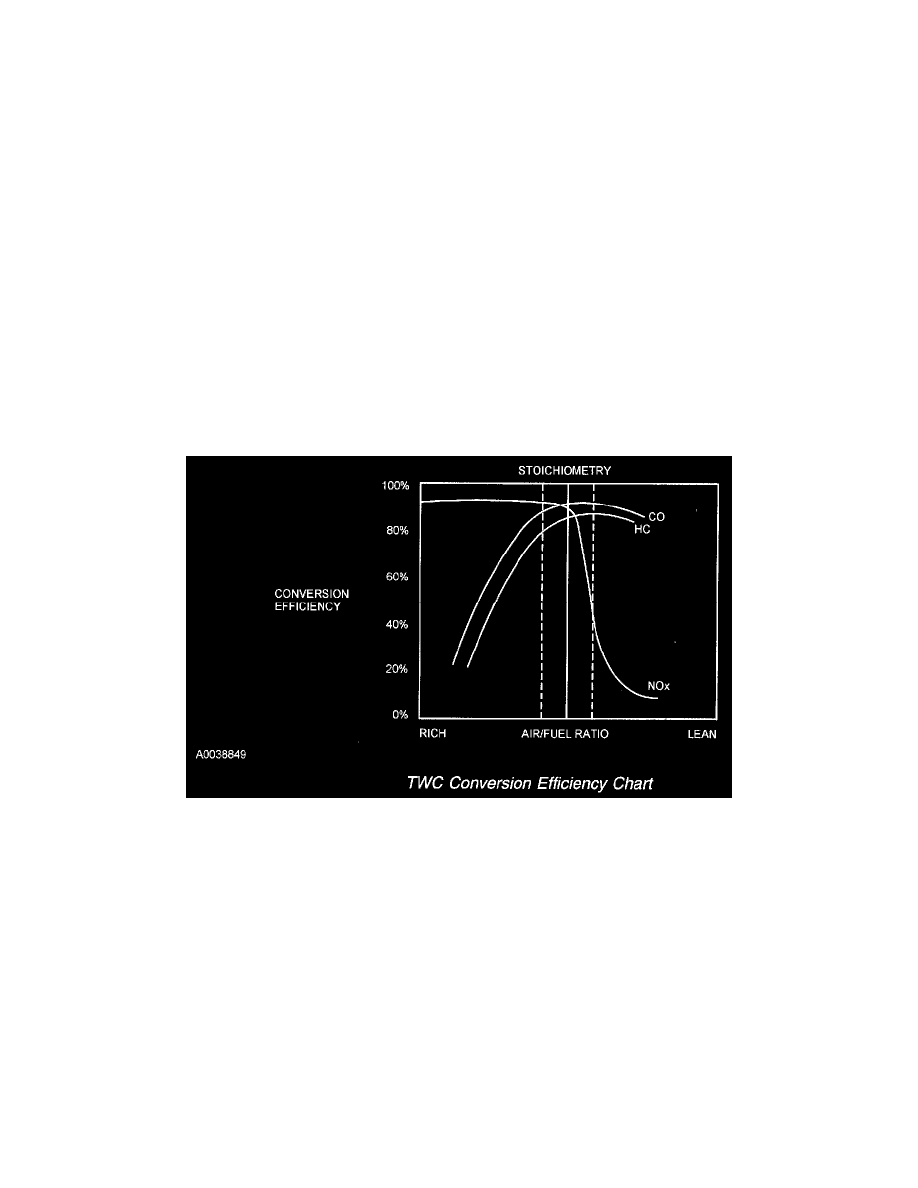Grand Marquis V8-4.6L Flex Fuel (2010)

Typical In-Line Engine
Catalytic Converter
A catalyst is a material that remains unchanged when it initiates and increases the speed of a chemical reaction. A catalyst also enables a chemical
reaction to occur at a lower temperature. The concentration of exhaust gas products released to the atmosphere must be controlled. The catalytic
converter assists in this task. It contains a catalyst in the form of a specially treated ceramic honeycomb structure saturated with catalytically active
precious metals. As the exhaust gases come in contact with the catalyst, they are changed into mostly harmless products. The catalyst initiates and
speeds up heat producing chemical reactions of the exhaust gas components so they are used up as much as possible.
Light Off Catalyst
As the catalyst heats up, converter efficiency rises rapidly. The point at which conversion efficiency exceeds 50% is called catalyst light off. For most
catalysts this point occurs at 246°C to 302°C (475°F to 575°F). A fast light catalyst is a three way catalytic converter (TWC) that is located as close to
the exhaust manifold as possible. Because the light off catalyst is located close to the exhaust manifold it lights off faster and reduces emissions more
quickly than the catalyst located under the body. Once the catalyst lights off, the catalyst quickly reaches the maximum conversion efficiency for that
catalyst.
Three Way Catalytic Converter (TWC) Conversion Efficiency
A TWC requires a stoichiometric air/fuel ratio, 14.7 pounds of air to 1 pound of gasoline (14.7:1), for high conversion efficiency. In order to achieve
these high efficiencies, the air/fuel ratio must be tightly controlled with a narrow window of stoichiometry. Deviations outside of this window greatly
decrease the conversion efficiency. For example a rich mixture decreases the HC and CO conversion efficiency while a lean mixture decreases the
NOx conversion efficiency.
For vehicles using E85 the required air/fuel ratio is 9.8:1. Other gasoline/ethanol mixtures require a variable air/fuel ratio between 14.7:1 to 9.8:1
dependent on the percentage of ethanol content.
TWC Conversion Efficiency Chart
Exhaust System
The exhaust system conveys engine emissions from the exhaust manifold to the atmosphere. Engine exhaust emissions are directed from the engine
exhaust manifold to the catalytic converter through the front exhaust pipe. A HO2S is mounted on the front exhaust pipe before the catalyst. The
catalytic converter reduces the concentration of CO, unburned HCs, and NOx in the exhaust emissions to an acceptable level. The reduced exhaust
emissions are directed from the catalytic converter past another HO2S mounted in the rear exhaust pipe and then on into the muffler. Finally, the
exhaust emissions are directed to the atmosphere through an exhaust tailpipe.
